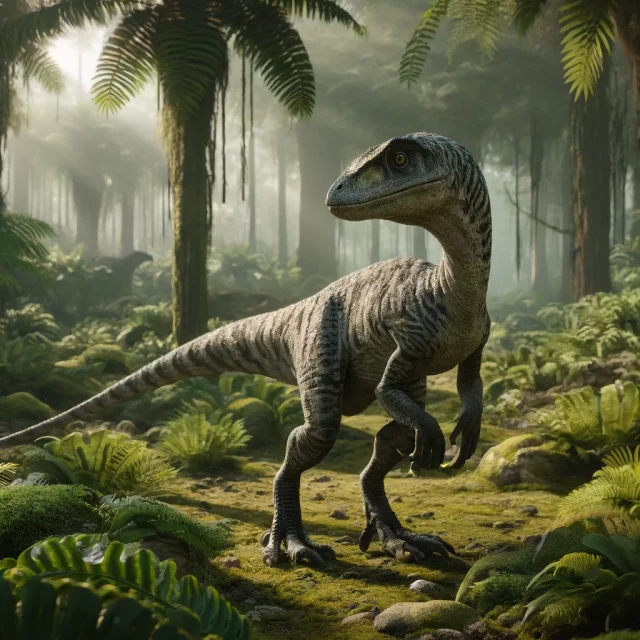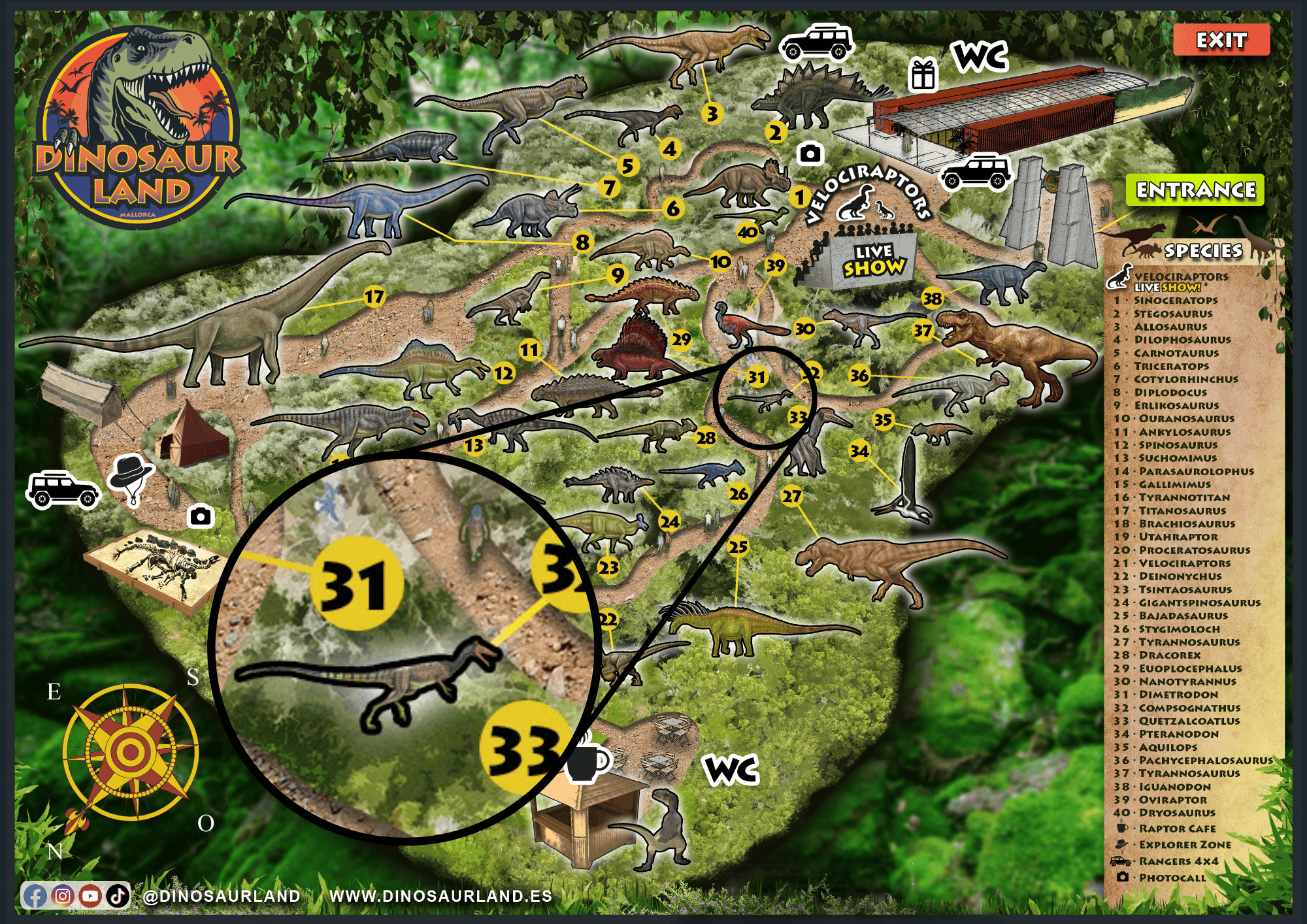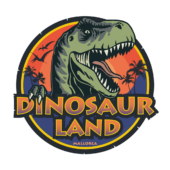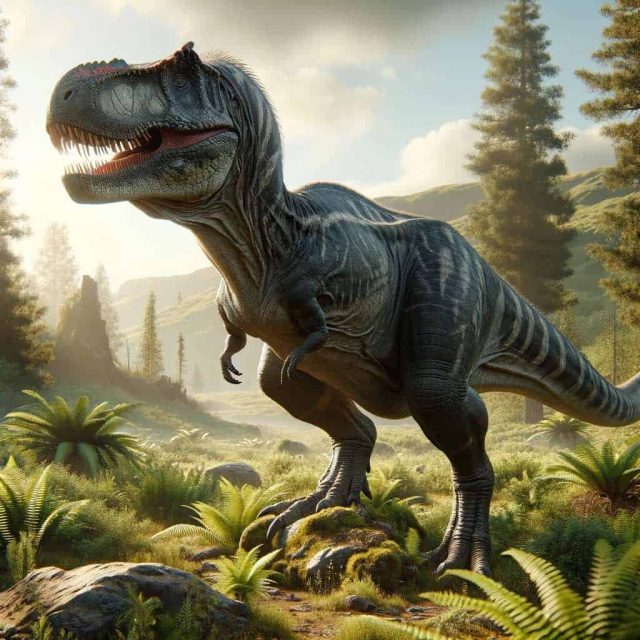Its name means elegant jaw. It was one of the smallest dinosaurs. It looked like a bird that walked on two legs. It had a long tail that acted as a counterweight and provided stability during turns. Despite its small size, this animal was predatory as its many sharp teeth suggest.

Compsognathus
Family
ornithischia
Era
Jurassic, about 155 to 145 million years ago
Where he lived?
Riedenburg-Kelheim region of Bavaria, southern Germany
Weight
3Kg
Height
0,4m
Length
1m
Learn more about Compsognathus: The Sleek-Jawed Dinosaur
In the vast realm of the dinosaurs, where giants like Tyrannosaurus rex and Brachiosaurus walked the Earth, there was a small but fascinating inhabitant that proved size isn't everything. This dinosaur, which was no bigger than a modern chicken, offers a unique window into the past, revealing the diversity and adaptability of life in the Mesozoic era.
A Tiny Creature with Big Secrets
Compsognathus was one of the smallest dinosaurs known, with a size that barely exceeded one meter in length, a height that did not exceed 30 centimeters and a weight that hovered around a few kilograms. Despite its small size, this bipedal dinosaur resembled a bird that walked on two legs, standing out in the prehistoric panorama for its agility and dexterity.
A swift and agile hunter.
Although diminutive, it was a formidable predator. Its numerous sharp teeth suggest that it was an active hunter, capable of catching small prey with precision. Its long, slender tail acted as a perfect counterweight, providing stability during quick turns and maneuvers, an essential feature for a predator that relied on its speed and agility to capture insects, small reptiles and possibly even the young of other dinosaurs.
Fossil Rarities
To date, only two fossils of Compsognathus are known, one discovered in France and the other, smaller, in southern Germany. These fossils have been crucial to understanding not only the anatomy of this small dinosaur but also its ecology and behavior. Compsognathus held the title of the smallest known dinosaur for many years, a reminder of the vast array of life forms that have inhabited our planet.
Unique Adaptations
The hind legs of Compsognathus were relatively long and adapted for high-speed running, indicating that this dinosaur could quickly escape predators and pursue prey effectively. Its light and aerodynamic skeleton, together with its long tail, contributed to perfect balance, allowing it to perform fast and precise movements, essential for its survival.
An Enduring Legacy
Study of the Compsognathus skeleton and its fossils has provided a wealth of information about how these dinosaurs hunted and their lifestyle. Comparison between Compsognathus and Velociraptor, another famous small predator, reveals fascinating differences in the adaptation and evolution of theropod dinosaurs. Although Compsognathus was not as large or as ferocious as Velociraptor, its speed, agility, and the strategies it employed to hunt its prey make it an equally interesting subject for study.
A Little Giant among Dinosaurs
Compsognathus teaches us that in the prehistoric world, even the smallest creatures had their place and importance. Their existence reminds us of the amazing diversity of life on Earth and how different life forms adapted to their environments in order to survive. Through the fossils of Compsognathus, we can peek into an ancient world, full of extraordinary creatures that, although extinct, continue to inspire wonder and curiosity.
At Dinosaurland, we celebrate the wondrous diversity of prehistoric life, from the most impressive giants to small predators like Compsognathus. Each fossil, each reconstruction, brings us one step closer to understanding the rich tapestry of life on our planet. We invite you to explore this lost world and discover for yourself the magic and mystery of dinosaurs.

see more dinosaurs
plan your visit








